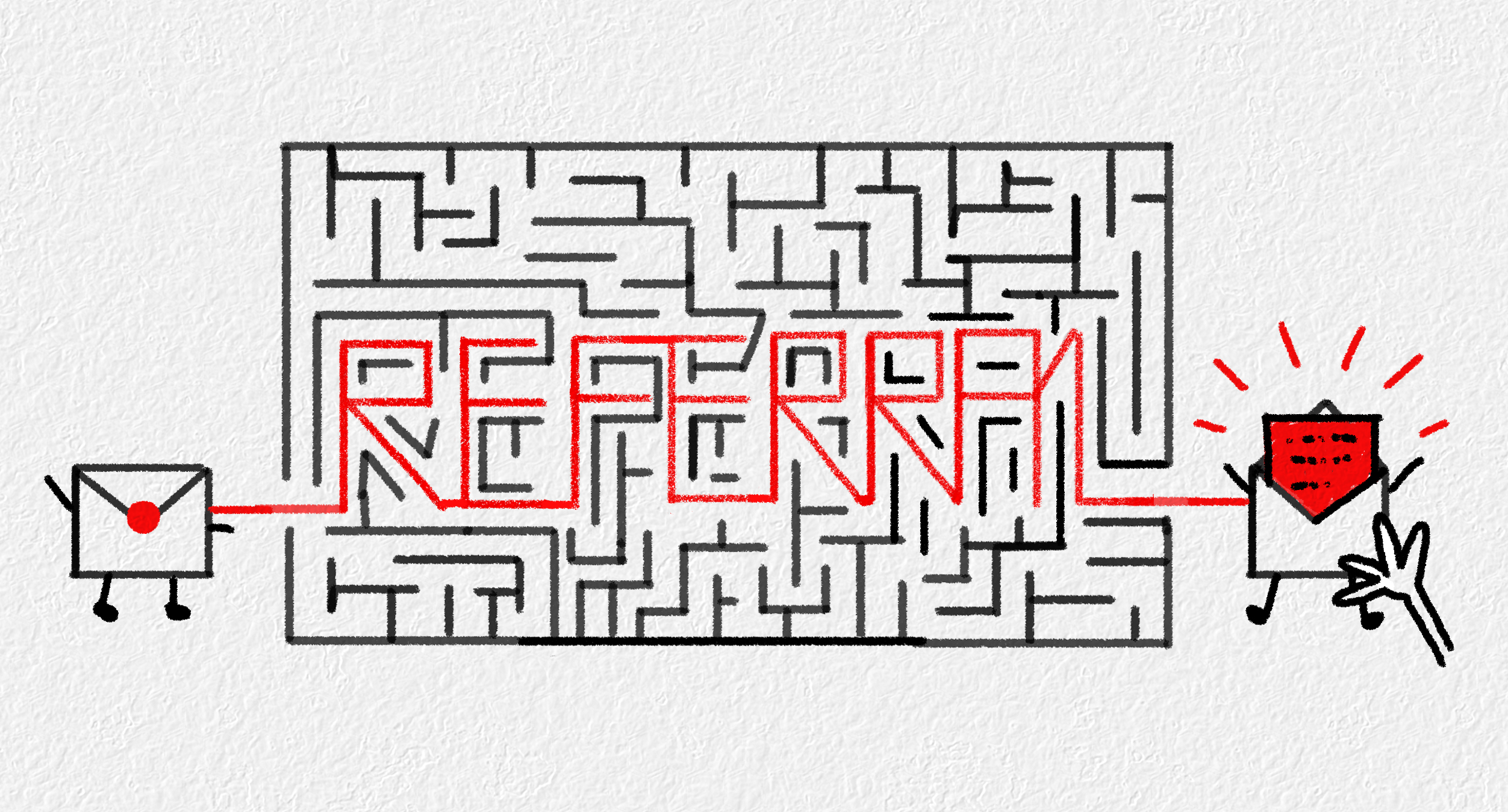A quick guide to not getting your referrals to the public system immediately sent back.
Specialist outpatient referrals to the public system are notoriously difficult – but they don’t have to be the worst part of a GP’s day.
After four years processing outpatient referrals for a large public health district in Queensland, I have seen almost every possible reason for a referral not reaching its end destination.
Drawing on this experience, I’ve cobbled together a guide of referral dos, don’ts and maybe-think-about-its for frustrated GPs.
Although specific procedures for handling will vary across health districts, the information included in this guide is as general as possible.
What to include
Starting with the obvious: public hospital systems require at least three patient identifiers to be accepted – at a minimum, these are name, date of birth and home address.
The reason three are needed is to be able to verify the patient on the referral against hospital records, and to prevent the referral being attached to the wrong patient profile on the hospital’s end.
Because patients will occasionally move or change their name, it is also useful to include their Medicare number on the referral as well.
The referring clinician’s name, provider number and contact details must also be on the referral – name and provider number are used for billing purposes, while referring practice contact details are essential if something goes wrong with the referral.
Under MBS guidelines, the referral must also be signed and dated by the referring practitioner.
For practices using software like Medical-Objects or Best Practice to generate and send referrals securely via the internet, it is understood a PKI e-signature is a valid practitioner signature; this should count even if the referral is then printed out and faxed.
Referrals not made using one of these secure transfer services will, however, need to be physically signed.
If the patient’s referral expires, and they need to be re-referred for ongoing care, the GP is normally able to re-send in the original referral, so long as the date is changed to reflect a new period of care.
Another essential inclusion is where and by whom the patient should be seen – preferably the hospital, clinic and specialist’s name.
Referrals are not required under MBS guidelines to be named to a consultant, but there is always a chance that the hospital will request a named referral down the track; referring to a specific specialist from the outset may reduce paperwork in the long run.
Not every hospital will have the facilities to treat certain conditions; maxillofacial and ophthalmology, for instance, are not available in as many hospitals as orthopaedics.
Taking the time to check whether a hospital runs the relevant clinic prior to sending the referral will ensure the referral travels to the intended place in the first instance, rather than bouncing between facilities.
Urgent referrals should always be marked as such. This is best done by simply writing URGENT in big letters, as the first person to pick up and process the referral may not necessarily be a clinician.
Test results and investigations relevant to the patient’s condition should also be included – if more results arrive after the referral has already been sent, then hospitals will normally accept an updated referral.
Most health services encourage GPs to include the patient’s medical and family history, but this is not a requirement.
Finally, there is the contentious point of indefinite referrals – while any referral requiring ongoing care is allowed under MBS guidelines to be nominated an indefinite referral by the GP, specialists will often request a continuation referral after 12 or 18 months.
In this situation, the RACGPrecommends in its own referral guide that the GP provide the new referral as requested, to ensure continuity of care, but also advises the medical specialist in question that they failed to honour an indefinite referral.
Where and how to send
Before sending, it is important to note that some hospitals may have age cut-offs which vary across specialties; to avoid delay, verify patient eligibility with the hospital.
Many mental health and detox services, despite being public, run on slightly different record-keeping systems – these referrals will often need to be sent directly to the specific service, rather than through the hospital.
Secure transfer systems will enable a practice to send a referral through electronically; while this method is a reliable way of ensuring the referral arrives at the correct destination, the software may occasionally encounter a formatting error and display certain test results as blank boxes.
This error is normally visible if the document is manually printed as well.
To avoid unnecessary back-and-forth, which can delay patient care, taking the time to check all test results are showing up as intended is a reasonable precaution.
If the practice is unable to electronically send a referral, faxing or physically posting are the next-best options.
One common issue with fax is referrals scanning incorrectly – sometimes, only half of a referral is received.
When this occurs, the document is normally returned to the sender as a notification; however, this may not be immediate, depending on the specific facility’s process.
Emailing, unfortunately, is not an option for submitting a public referral as per national guidelines pertaining to the Electronic Transactions Act 1999.
Although it may be tempting to send the same referral to two different public hospitals to gauge which has the shorter wait-time, this is not advised as it creates confusion.
Handy rules of thumb
Hospital catchments can be opaque at best.
The preference in the public system is always for a patient to be seen as close to home as possible; but – as with most preferences – there are several caveats.
Although this may vary across different health districts, three useful rules of thumb are:
- Patient request trumps catchment: if a patient wishes to go to a specific hospital outside of their catchment area for a specific reason, this is normally fine, but it does need to be noted in the referral body.
- Named referral trumps facility: if a referral is received and named to a specialist at a specific hospital, but that specialist no longer works there – but does work in another public hospital within the same district – it is likely the referral will be forwarded to the hospital where the named clinician now works, even if it is further away from the patient.
- Inter-hospital arrangements trump named referrals: there may be pre-existing arrangements at a hospital-to-hospital or health-district-to-health-district level which dictate where certain patients are seen. For instance, a very busy health district may decide to enforce strict catchment areas for a popular outpatient clinic such as orthopaedics.
When to send
As discussed above, hospitals will occasionally request a continuation or named referral – these often just require a stamp, signature or re-dating of the original referral.
However, a referral is not required if the patient is presenting to a hospital emergency department – referrals take significantly longer to process and be triaged, and if an emergency department referral is sent, there is a high chance it could be received after the patient has already presented, been treated and discharged.



